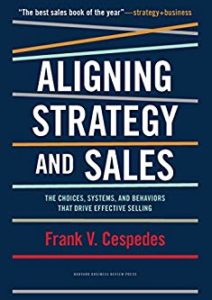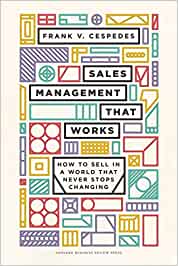Off the Cuff Instant Interview Question: In your experience, what is the biggest mistake companies make in not aligning strategy and sales?
The biggest mistake is confusing strategy with things like mission, purpose, forecasting, or goals. And that leads to the most expensive mistake: investing in selling initiatives that don’t maximize value—the selling company’s financial value and its brand value with prospects.
Any strategy lives or dies on the basis of its customer value proposition. Ask yourself: do we ultimately compete on the basis of our cost structure or on another basis that increases our target customer’s willingness-to-pay? In other words, will we sell it for more or make it for less?
Nearly all competitive markets confront firms with this choice. In retailing, there is Wal-Mart, Dollar General, and category killers. But there is also Nordstrom, Louis Vuitton, and many high-end boutiques. In pharmaceuticals, there are blockbuster drugs targeted at mass-market segments. But there is also Soliris, a drug sold by Alexion to treat certain blood and kidney diseases that afflict relatively few people. Soliris costs $400,000 per patient annually. Insurers pay this price because Soliris is the only safe and effective treatment for these diseases and the price is less than the total cost of alternative treatments. Alexion’s sales have grown from $25 million in 2007 to nearly $2 billion 10 years later.
You must be clear about where your business falls along this spectrum:
Make It for Less ………………………………………………… Sell It for More
When companies are not clear about this, sales efforts run into problems. Externally, there is always another firm out there who can beat you on cost and price, or another that tailors its operations and sales efforts to the buying criteria of a particular segment better than you can. Depending upon your value proposition, salespeople face different buyers and selling tasks and require different support processes to deliver value. Internally, different assets are needed for effective selling of different value propositions. Different metrics are relevant for setting and evaluating sales performance. And basic HR issues are at stake: salespeople cannot be premium service sellers in the morning and cost hawks in the afternoon. People are not like kitchen faucets; you can’t just turn them on or off.
Aligning strategy and sales begins with understanding how you compete, and a moment-of-truth is the customer value proposition. Clarity about that helps salespeople (and everyone else) focus more efficiently, qualify customers more effectively, and allocate time and money more profitably.
Pipeliner CRM empowers companies to align strategy and sales. Get your free trial of Pipeliner CRM now.













Comments (7)
this article is great….
Companies should be able to define their goals and objectives properly.
It is quite clear that an incisive CRM should be able to bind Strategy and Sales. This is what Pipeliner CRM does!
learnt from this article
what a such powerful crm, it’s outshine other crm
so informative
so educative